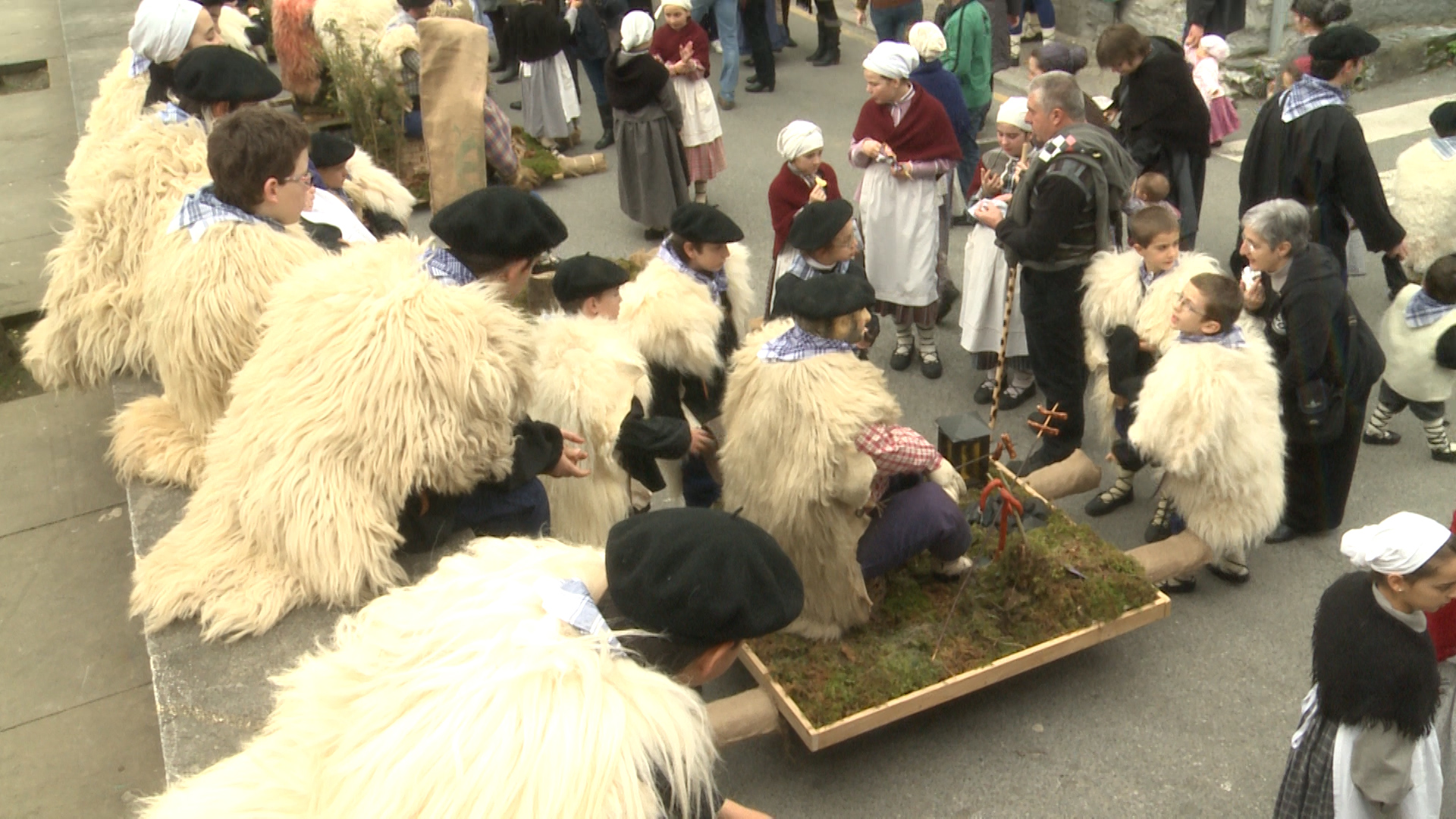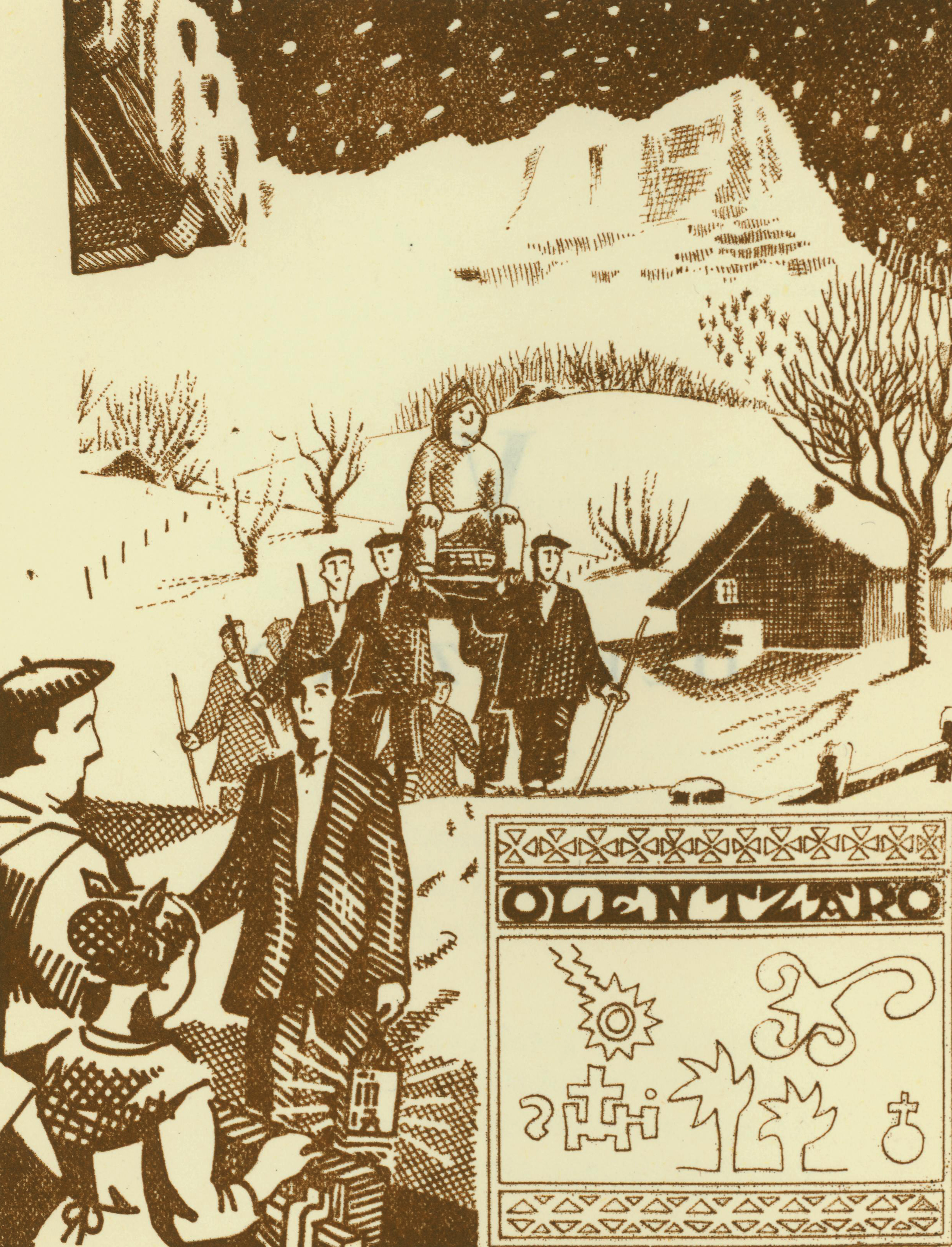Basque ethnography at a glance
Olentzero is a traditional Christmas character in the Southern Basque Country. The charcoal burner dresses nowadays in traditional country attire and brings presents to children on the night of Christmas Eve. The relatively modern Olentzero tradition we know has spread over practically the whole of the Basque territory, including areas where the Basque language is not spoken. The ritual originated in Gipuzkoa, in the environs of Zarautz, and reached the mountains of Navarre. In the area of Lesaka the legend is deeply rooted, and the locals have from time immemorial celebrated Olentzero’s way down the mountains where he makes charcoal.
Pío Baroja in his memories talks about an unfriendly individual he calls Onentzaro, who frightens children, a type of bogeyman really. Here follow Baroja’s words: La criada de casa nos decía también que a los chicos sucios que no se lavaban ni se peinaban y llegaban a tener piojos, los llevaban a la playa de Zurriola, les hacían una cuerda con el pelo, y Onentzaro los arratraba por la arena al interior del mar. (Our maid would also tell us dirty boys who did not wash themselves and caught lice were taken to Zurriola beach. Their hair was twisted into a string and Onentzaro dragged them along the sand into the sea.)
Pío Baroja’s Onentzaro has reddened eyes, and so is the hard-drinking collier depicted in many versions of the popular song: Onentzaro, begi gorri, non arrapatu dek arrai ori… (Red-eyed Onentzaro, where did you catch that fish –where did you get so drunk–…)
Olentzero’s eyes thus are reddened. A second remarkable feature of the mythological figure, and even more striking, is the fact that he has as many eyes as days are in a year and one more. Nikolas Ormaetxea Orixe in his book of poems Euskaldunak describes our man:
Begi-gorri dator Aiton Olentzaro, / urteak egun ainbat begi ta bat geigo; / gurdia aiñeko sabel, aurpegi dana ago… / Nondik nora sortu zan jakin bage nago.
(Here comes red-eyed Aiton Olentzaro, / as many eyes as days in a year and one more; / his belly as big as a cart, his face all mouth… / I do not know where he comes from.)
In Orixe’s description, same as in Baroja’s, Olentzero’s eyes are reddened; however, a new interesting trait is added: he has as many eyes as days are in a year and one more. This is quite an extraordinary portray of a fantastic character that turns up on the last day of the year, St Sylvester’s Day. Reports of it are found in our region and out of it. Evidence of it within our geographical area of study is fairly limited though, one of the most interesting being given by Gerardo López de Guereñu in his work Calendario alavés. Almost at the end of the book, he recounts a custom observed on 31 December in Araba: «En estas fechas suele embromarse a mocetes, diciéndoles ‘que anda por las calles un hombre con más ojos que días tiene el año’». (On this day youth are teased with stories about a man with more eyes than days in a year wandering the streets.)
Jabier Kalzakorta – Full member of the Academy of the Basque Language and professor at the University of Deusto
Translated by Jaione Bilbao – Language Department – Labayru Fundazioa



